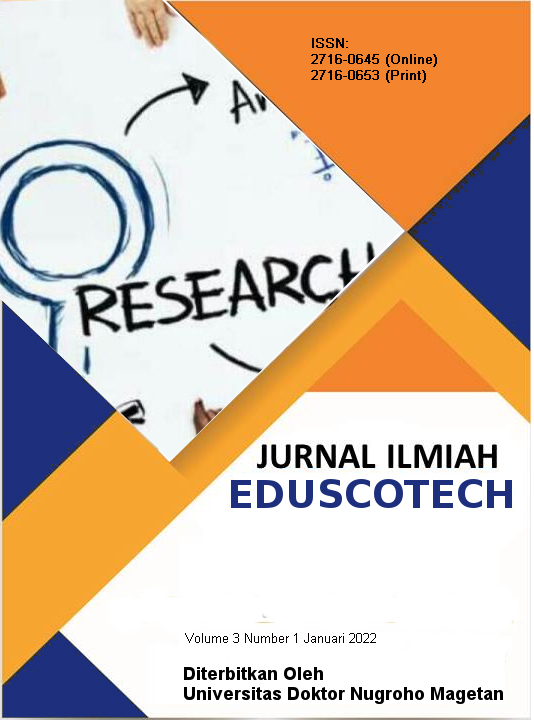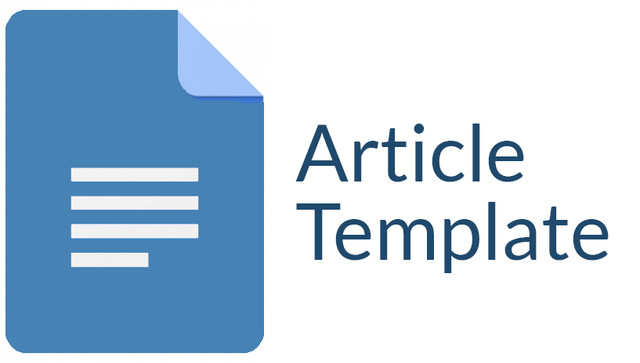Upaya Meningkatkan Keterampilan Berhitung Dengan Permainan Puzzle Pada Anak Kelompok B TK Pancasila Klepu Sooko Ponorogo
Keywords:
Early Childhood, Early Counting, Puzzles GamesAbstract
Early numeracy skills in early childhood can be developed in various ways, one of which is through Puzzles. However, in reality, children in group B of Pancasila Kindergarten Klepu Sooko Ponorogo have not been able to recognize number symbols. Through this study, the researcher aims to determine the increase in early numeracy skills through Puzzle media in Pancasila Kindergarten Klepu Sooko Ponorogo. The method used in this study is the Classroom Action Research (CAR) method with a quantitative and qualitative approach consisting of four stages, namely planning, implementation, observation and reflection. This study was conducted for one month, with data collection techniques using observation, interview, and documentation techniques. Data analysis was carried out descriptively, quantitatively and qualitatively with a percentage. Based on the cognitive development of children in group B, the results of the study showed that from the pre-cycle results for achieving success indicators, the results from the pre-cycle for achieving success indicators were only 30%, then after cycle I the achievement level increased to 54%, so the increase from pre-cycle to cycle I was 24%, then in cycle II the achievement level increased to 75%, so the increase from cycle I to cycle II was 21%. Therefore, it is hoped that this research can provide benefits for all parties.
Downloads
References
Bahar, and Risnawati Risnawati. “Pengaruh Penggunaan Media Puzzle Terhadap Hasil Belajar Matematika Siswa Kelas III SD Di Kabupaten Gowa.” Publikasi Pendidikan 9, no. 1 (February 28, 2019): 77. https://doi.org/10.26858/publikan.v9i1.8446.
Devi, Ni Made Intan Asri. “Pengembangan Media Pembelajaran Puzzle Angka Untuk Meningkatkan Kemampuan Mengenal Lambang Bilangan.” Jurnal Ilmiah Pendidikan Profesi Guru 3, no. 3 (November 1, 2020): 416–26. https://doi.org/10.23887/jippg.v3i3.28331.
Farihah, Himmatul. “Mengembangkan Kemampuan Berhitung Anak Usia Dini Melalui Kegiatan Bermain Stick Angka.” Jurnal Teladan: Jurnal Ilmu Pendidikan Dan Pembelajaran 2, no. 1 (May 11, 2017): 1–19.
Ahmad Susanto. Perkembangan Anak Usia Dini: pengantar dalam berbagai aspeknya. Kencana, 2011.
Mubarok, Ahmad Aly Syukron Al, and Amini Amini. “Kemampuan Kognitif dalam Mengurutkan Angka melalui Metode Bermain Puzzle Angka.” Jurnal Obsesi : Jurnal Pendidikan Anak Usia Dini 4, no. 1 (October 4, 2019): 77–89. https://doi.org/10.31004/obsesi.v4i1.221.
Muloke, Inggried Claudia, Amatus Yudi Ismanto, and Yolanda Bataha. “Pengaruh Alat Permainan Edukatif (Puzzle) Terhadap Perkembangan Kognitif Anak Usia 5-6 Tahun Di Desa Linawan Kecamatan Pinolosian Kabupaten Bolaang Mongondow Selatan.” Jurnal Keperawatan 5, no. 1 (January 18, 2017). https://doi.org/10.35790/jkp.v5i1.14718.
Purwaningsih, L., Hadianti, A., & Marsini, M. (2022). PROTOTYPE DESIGN FLIPBOOK MEDIA IN TEACHING GRAMMAR “SIMPLE PAST TENSE”. Indonesian EFL Journal, 8(2), 287-294.
Nining Sriningsih, M. Pembelajaran Matematika Terpadu untuk Anak Usia Dini. Pustaka Sebelas, 2009.
Downloads
Published
Issue
Section
License

This work is licensed under a Creative Commons Attribution-ShareAlike 4.0 International License.
Authors who publish with this journal agree to the following terms:
1. Copyright on any article is retained by the author(s).
2. The author grants the journal, right of first publication with the work simultaneously licensed under a Creative Commons Attribution License that allows others to share the work with an acknowledgment of the work’s authorship and initial publication in this journal.
3. Authors are able to enter into separate, additional contractual arrangements for the non-exclusive distribution of the journal’s published version of the work (e.g., post it to an institutional repository or publish it in a book), with an acknowledgment of its initial publication in this journal.
4. Authors are permitted and encouraged to post their work online (e.g., in institutional repositories or on their website) prior to and during the submission process, as it can lead to productive exchanges, as well as earlier and greater citation of published work.
5. The article and any associated published material is distributed under the Creative Commons Attribution-ShareAlike 4.0 International License









